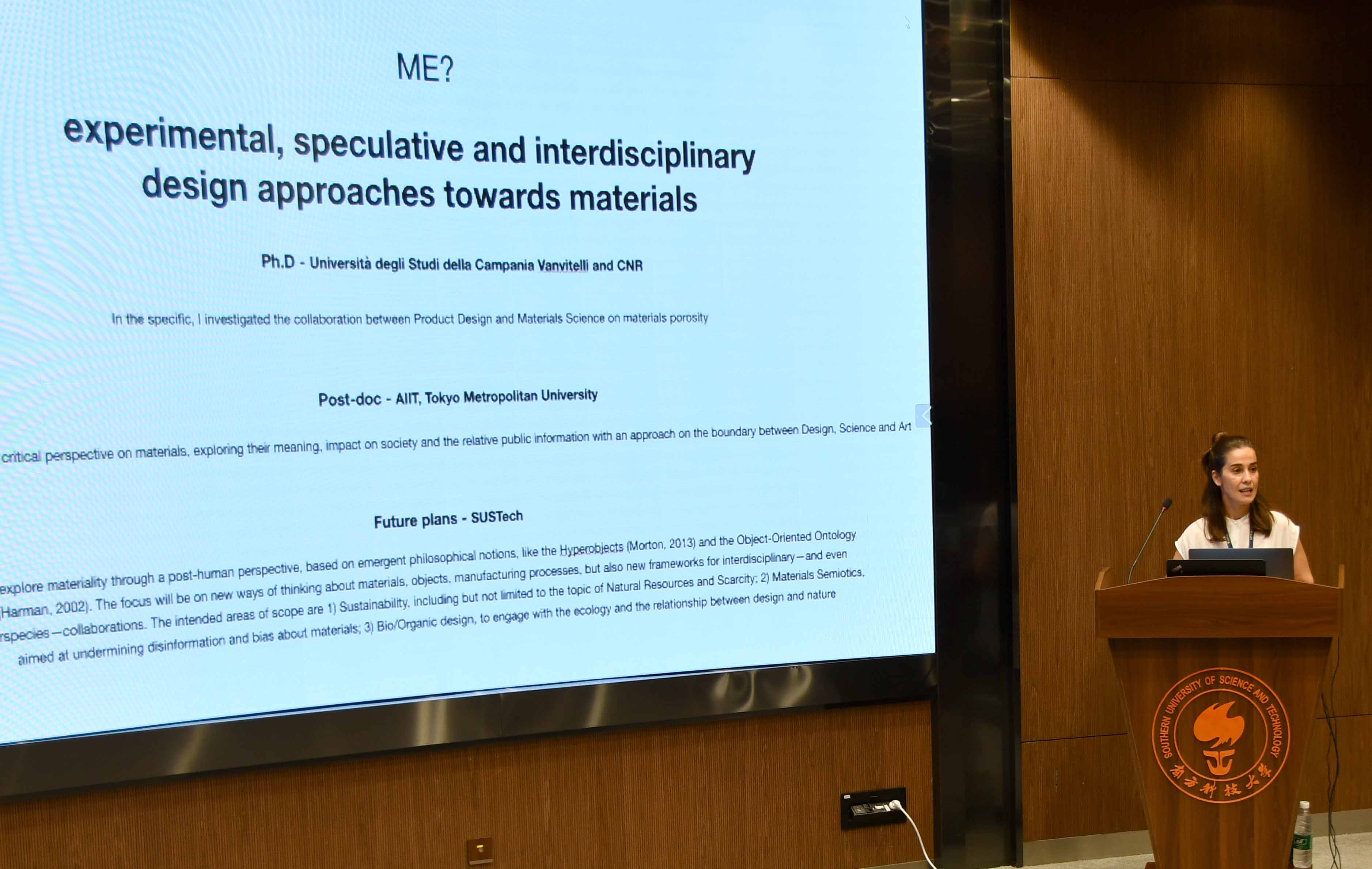May 12. 2022 - Latest News
On May 12, 2022, Professor Enza Migliore, School of Design, SUSTech, was invited by the Honor Society of Humanities and Social Sciences to give an academic lecture entitled "Time for Design: Acceptance of Challenges, Roles, and Practices in Contemporary Design", sharing with SUSTech teachers, students and the public her research and exploration of contemporary design practices, methods and pressing issues, as well as new perspectives on how to connect design, material culture, and critical theory to the world in which we live.

Professor Migliore first explores the limitations of the modern view of linear time and the challenges posed by our inadequate understanding of the concept of hyperobjects under the concept of the "Anthropocene” and shows multiple research perspectives on time from object oriented to archetype and its inspiration for designers. These definitions of time, she suggests, will help designers identify contemporary design practices and influence decision-making. Design should improve an ecologically driven method to design, focusing on its semantic, symbolic, anthropological, and social values, and endowing it with a holistic and interdisciplinary characteristic to solve complex problems.
In her discussion of existing design methods, Professor Migliore derived the term design fiction from science fiction. She said that design fiction is a design tool suitable for an era that is in urgent need of new ways of thinking and critical reflection. As a complement to design fiction, contemporary design scholar Wakkary et al. (2015) proposed the concept of material speculation as a way of critical inquiry in design research and considered design objects as counterfactual artifacts. Therefore, through lots of cases of artists' works and focusing on the three dimensions of time and object, time and knowledge, and time and manufacturing. Professor Migliore explained three key issues related to contemporary design practice: sustainability, information, and hybridization through a wealth of artists' works.
Finally, Professor Migliore introduced her research projects during her Ph.D. In that project, she collaborates with materials scientists across disciplines, experimenting with various chemicals using hybridization and design methods, hoping to change their porosity and morphology while retaining their mechanical resistance, and translate them into meta-analysis for other designers to use. She pointed that this interdisciplinary practice has begun to be applied in educational projects to cultivate new era designers who can deal with complex issues, scenarios and themes and go beyond the "human-centered" vision advocated by humanistic design.
In the Q&A session after the lecture, Professor Migliore had a lively discussion with teachers and students of SUSTech on the social challenges faced by design researchers today, how to combine time with different designs, how contemporary design educators should abandon cramming pedagogy, and how design can critically drive social reflection and progress.